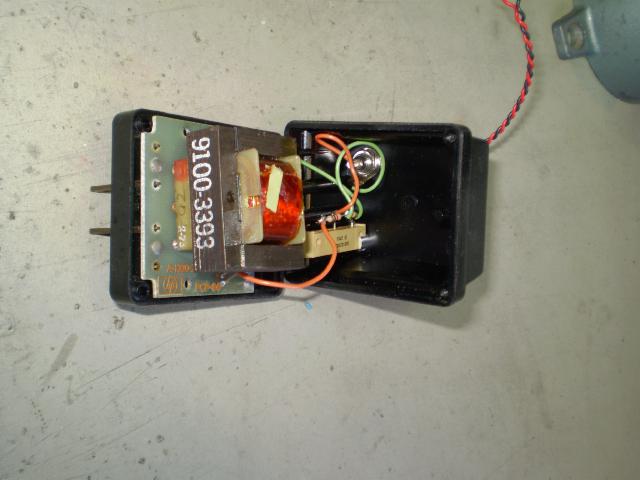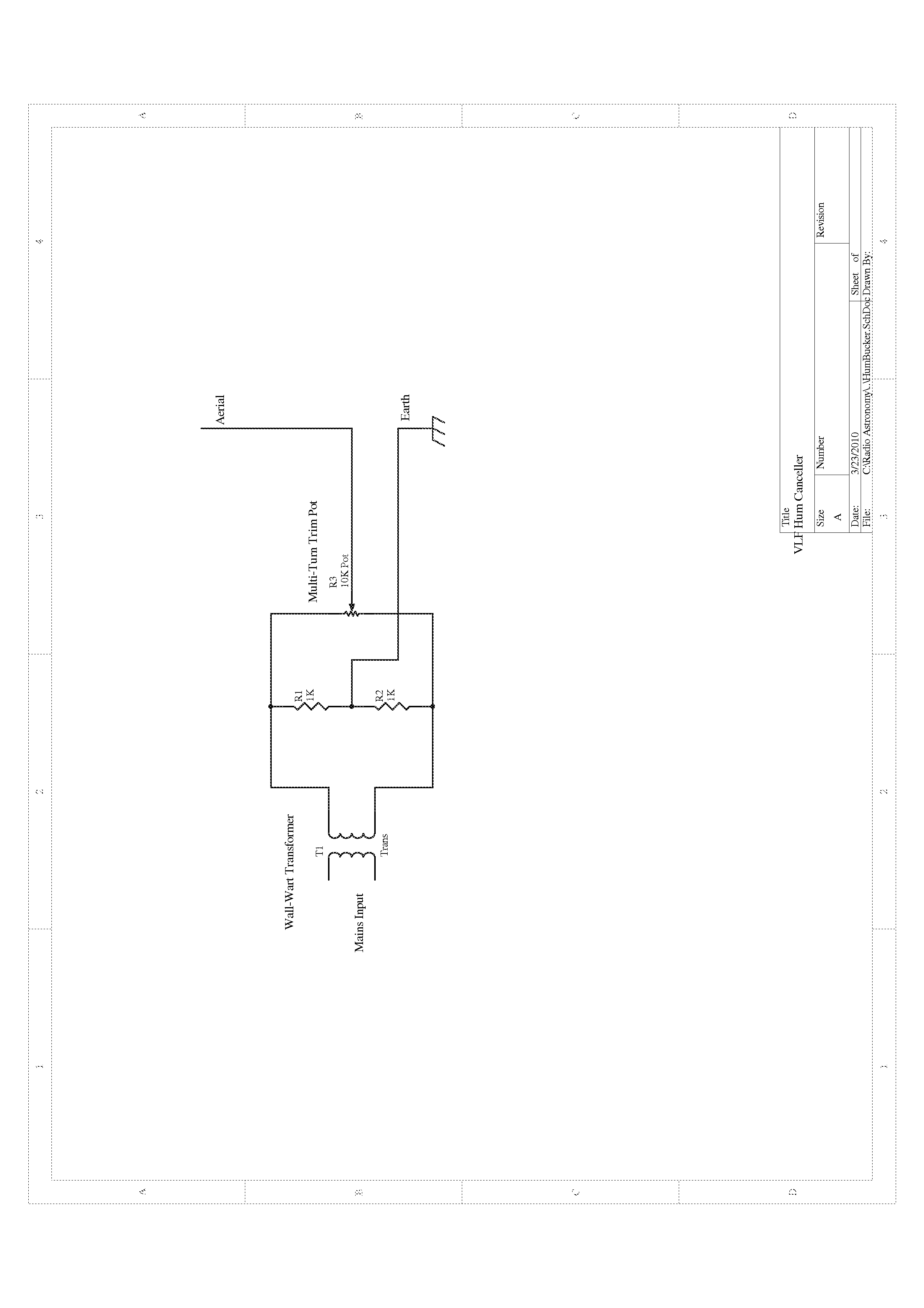I mentioned my trick for mitigating mains noise pickup in VLF antenna/amplifier setups at the SARA Western Conference over the weekend, and many people asked for more details. Here are a couple of pictures and a quick schematic.
The basic idea is to cancel out some of the local mains electric field right at the antenna by "transmitting" a small field that is out of phase. I have only tried this trick with electric field antennas. It might be interesting to try it with an extra winding around a loop too. First, locate a wall-wart that can be opened up easily. I found this one in my junk box, and it was held together with screws instead of glue. The label is gone, but I think this one was rated at 5VDC. The current doesn't matter since we will be drawing almost no power from it. DC outputs are preferred, since they will have some extra room we can use.


Once you have gotten it open, remove the rectifier/capacitor circuit. Be careful with the transformer secondary leads, that's the part you really need. You might want to use the original output cable, or change to a connector like I did. Figure out how you will access the trim-pot. I found a neat trimmer with a panel mount bushing in a bin at HSC. I haven't found these in a catalog, but Mouser carries a Vishay/Spectrol adapter that holds a standard trimmer on a panel.
If you lucked out, the transformer has a center tap that can be tied to earth. If not, you either need to add a couple of resistors as shown in this schematic, or you need a switch to choose the polarity of the cancelling signal.

With a center tap (real or virtual) the trim pot allows us to adjust the cancellation signal from max in-phase through zero to max out of phase.
To set it up, run some wire from the output of the device up near your antenna. My antenna is a piece of 3/4" Copper water pipe, about 8 feet long ( about 19mm by 2.4 meters). I tie-wrapped a couple of nylon standoffs to the side of the pipe and attached a section of 14AWG bare copper wire to them. You will need to experiment with this, so start with about a cubit. That's the length of your forearm, a very handy unit if you ask me. Connect one wire from the hum-bucker to it and the other to a nearby earth ground.
Now, look at the output of your antenna amplifier on an oscilloscope, and play with the adjustment on the hum-bucker to get minimum mains frequency noise. You won't be able to cancel it completely, but you should be able to reduce it considerably.
That's about it. There are plenty of areas for experimentation. For instance, it should be possible to adjust the phase with an RC network of some kind, or you might make the virtual ground network adjustable too.
Have Fun!
Keith
The basic idea is to cancel out some of the local mains electric field right at the antenna by "transmitting" a small field that is out of phase. I have only tried this trick with electric field antennas. It might be interesting to try it with an extra winding around a loop too. First, locate a wall-wart that can be opened up easily. I found this one in my junk box, and it was held together with screws instead of glue. The label is gone, but I think this one was rated at 5VDC. The current doesn't matter since we will be drawing almost no power from it. DC outputs are preferred, since they will have some extra room we can use.


Once you have gotten it open, remove the rectifier/capacitor circuit. Be careful with the transformer secondary leads, that's the part you really need. You might want to use the original output cable, or change to a connector like I did. Figure out how you will access the trim-pot. I found a neat trimmer with a panel mount bushing in a bin at HSC. I haven't found these in a catalog, but Mouser carries a Vishay/Spectrol adapter that holds a standard trimmer on a panel.
If you lucked out, the transformer has a center tap that can be tied to earth. If not, you either need to add a couple of resistors as shown in this schematic, or you need a switch to choose the polarity of the cancelling signal.

With a center tap (real or virtual) the trim pot allows us to adjust the cancellation signal from max in-phase through zero to max out of phase.
To set it up, run some wire from the output of the device up near your antenna. My antenna is a piece of 3/4" Copper water pipe, about 8 feet long ( about 19mm by 2.4 meters). I tie-wrapped a couple of nylon standoffs to the side of the pipe and attached a section of 14AWG bare copper wire to them. You will need to experiment with this, so start with about a cubit. That's the length of your forearm, a very handy unit if you ask me. Connect one wire from the hum-bucker to it and the other to a nearby earth ground.
Now, look at the output of your antenna amplifier on an oscilloscope, and play with the adjustment on the hum-bucker to get minimum mains frequency noise. You won't be able to cancel it completely, but you should be able to reduce it considerably.
That's about it. There are plenty of areas for experimentation. For instance, it should be possible to adjust the phase with an RC network of some kind, or you might make the virtual ground network adjustable too.
Have Fun!
Keith


 Calendar
Calendar




